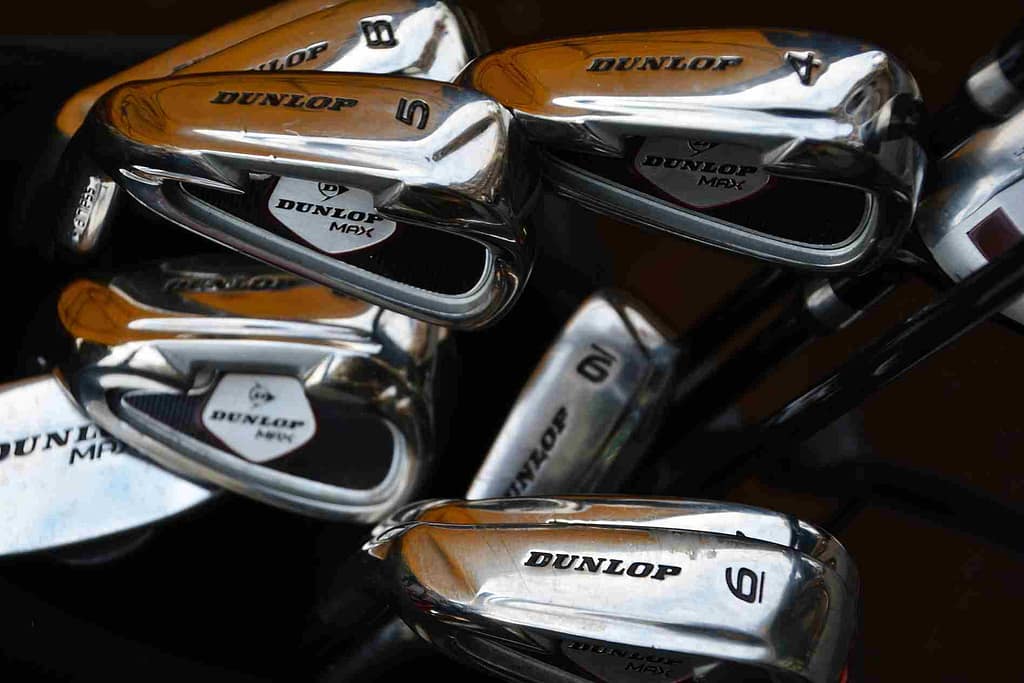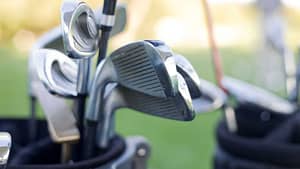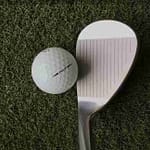Are you struggling to get out of the sand traps? Do you find yourself hitting the ball too thin or too fat, causing frustration and lost strokes? The problem may not be with your swing but rather the type of sand wedge bounce you’re using.
Different types of sand wedges come with different bounces, and choosing the right one can be the difference between a great shot and a disaster.
In order for some golfers to play golf on a 100-yard land or above, it becomes very crucial to choose the best sand wedge bounce that will be of most help to them in terms of wedge bounce when playing.
In a golfer’s bag, it is possible to have a sand wedge bounce 10 or 14, but choosing a wedge that has both a good loft as well as a wedge can be a winning combination for you.
In this article, we will explore the best bounce for sand wedges and how it can improve your bunker shots. We’ll discuss the various types of bounces, factors that affect bounce, and how to choose the best bounce for 60 degree wedge to take your bunker game to the next level.

As soon as you learn how to use these combinations of lofts effectively, bounces, and grinds, you will be able to make an accurate decision on what wedge is right for you.
You should get the best sand wedge bounce with at least 10 degrees of bounce if your golf course has hard ground and you are scared of blading the ball off of the surface due to concerns about blading.
In most bunkers, you will also find that the bottom is firm, so a sand wedge with 10 degrees of bounce or less is the best choice.
A best sand wedge bounce is considered almost 14 degrees suited for a smoother course that, from time to time, gets wet and has soft, lush grass; this will prevent you from leaving marks after you hit your golf ball.
What Is Bounce On A Wedge?
The bounce of a golf wedge is a measure of forgiveness. In technical terms, bounce refers to the angle between the leading and trailing edges of the club.
A bounce is the result of an impact between the wedge and the ground surface when the wedge hits the ball.
On impact, the more the leading edge of the wedge bounces, the higher it will be off the ground as it hits the ground. This is also referred to as the distance between the top of the leading edge of your club and the ground.
It has long been known as one of the most overlooked and important details in golf, which most people ignore and end up with a game experience that is less than satisfactory and don’t choose the best sand wedge bounce.
Importance Of Bounce Degree On Wedges
Having the best sand wedge bounce with more bounce will benefit you if you are playing on soft and grassy lands, as the wedge will be less likely to dig deeply into the ground and slow down the golf ball.
It is not advisable to use the high bounce wedge on a harder surface or turf as this will increase the repulsion impact between the wedge and the ground, which is not a good thing.
Obviously, if you are playing on soft ground, you would like the best sand wedge bounce to have a higher bounce to ensure that the ball can ‘bounce more’ when you hit it so that the wedge does not stick to the soft ground.
When a golfer hits the ball with a wedge on firm ground, he should make sure that the wedge is not bounced much off the hard surface and that it is not hit the ball in the equator.
In order to hit a golf shot, the golf club must bounce off the turf in order to be effective. If you don’t do this, you are just digging into the turf like a hoe. The important thing is to have the sand wedge loft and bounce interact with the turf and make the shot as accurate as possible.
Another thing you need to bear in mind is that if you misuse the bounce of your wedge, you might not be able to hit the ball accurately.
Determining The Bounce Of Wedges

There are a variety of wedges available, and you may wonder how many degrees a mid-range bounce on a wedge in the market is for different bounce angles, which markings can identify on wedges such as 52 08, which means that the wedge has a 52 degree loft and an 08-degree bounce.
It is also possible that there would be a 52-10 wedge of the same model that has a 52-degree loft and a 10-degree bounce or 14-degree bounce as well.
The following is a list of how much bounce on wedges is, and by considering them, you will be able to make a more informed decision about what bounce for wedges to choose from.
The sand wedge with 54-56 degrees has the deepest bounce.
The lob wedge having 58-60, has the smallest and narrowest bounce.
The gap wedge comes with 50-52 degrees of bounce for a gap wedge and with medium depth.
The pitching wedge also has a low bounce and a varying shallow to medium depth.
There are many obstacles on golf courses, including deep rough and sand bunkers, which make the game more challenging.
As one of the best sand wedge bounce and the most used wedges on the course, the sand wedge generally features the largest bounce angle of all wedges, which helps golfers to get the ball out of deep bunkers and sand traps.
When it comes to wedges, then picking the correct loft and best sand wedge bounce is important as they are usually an extension of an iron set, so they do not normally have a lot of bounce in them, and they will be placed in the mid or low category above.
Is Sand Wedge Bounce of 10 or 14?
As low as six degrees can be achieved by a sand wedge, while as high as a sand wedge can achieve fourteen degrees. As a result, a best sand wedge bounce with ten degrees bounce will be considered to have a medium bounce, whereas a sand wedge bounce with fourteen degrees bounce will be considered to have a high bounce.
You will likely be more pleased with the high bounce levels if you are a player who prefers to pick the ball cleanly and not take a large dent in it. If you prefer to take large holes in your ball, the ten-degree bounce would be more suitable for you.
A wedge bounce for beginners of around 10 degrees will be ideal if you are playing on a course with a firmer surface, as you are afraid of blading your ball if you clip your ball off the surface.
As a general rule, your bunkers will also be firm, which means that the best loft for sand wedge will be at least 10 degrees.
You should use a best sand wedge bounce of 14 degrees if your golf course is soft and sometimes wet, with soft green grass.
The Choice of Low Bounce (6-10) Wedge
When choosing the best sand wedge bounce for a firm turf place like bunkers with firm and raw sand, you should choose one with a low bounce of 6 to 10 degrees. With low-bounce wedges, you are able to hit soft shots with more precision and eliminate divots while also getting a shallower attack angle, sweeping swing sides, and hitting high-flop shots, resulting in clean ball contact with fewer divots.
Use A Low Bounce Wedge
- When you have a light swing and you have a low number of divots on the point of contact.
- If your playing surface has firm ground and is hard as well, also solid sand of bunkers.
- If you prefer to use the best sand wedge bounce with an open face to demonstrate flexibility and hit some high-flying wedge shots with open faces.
Mid-Bounce (7-10) Wedge – What You Need to Know
The mid-bounce wedge has an angle between 7-10 degrees and can be used on surfaces ranging from firm to moderate in terms of the hardness of the turf.
Golfers are able to make precise shots with the help of the best golf balls around the course with the help of these best sand wedge bounce because of wedges’ precise location ideas and trajectory control, which makes them the most practical and best sand wedge bounce options for different course conditions and can be used accordingly to make precise shots around the course.
It is due to the fact that they are mid-bounce wedges that provide golfers with a wide range of swing options and moderate attack angles.
There are a lot of golfers who choose the best sand wedge bounce between 10 and 12 because those bounces are considered to be mid-bounces and provide some additional flexibility to the golfer.
Why Use High Bounce (10-14) Wedges
High-bounce wedges with 10-14 degrees of bounce and wider soles will offer you more forgiveness on shots when you are playing on grassy lands, soft bunkers, and fluffy lies, as opposed to when you are playing on hard bunkers and firm turfs.
Using this best sand wedge bounce will make your wedges a lot more powerful and provide you with deep divots, sharp attack angles, and powerful swings since the leading ends of the wedges will not drag in too much.
You Should Use High Bounce Wedges:
If you want to be precise with your golf swings and dig deeper into the divots you have made. In case you are planning to play on a course with lush and soft surfaces.
When you don’t want to modify the wedge’s face and want to hit the ball up in the air with a full swing, then you will need to modify the wedge’s clubface.
What Is The Best Bounce For A 56 Degree Wedge?
For sand wedges with 56 degrees of loft, there may be an “S” indicating the wedge is a sand wedge on the sole or another number to indicate the degree of bounce.
In case it is not indicated, then know that these sand wedges have moderate and versatile bounce degrees, approximately 12 degrees between two extreme options. These sand wedges can be ideally used for any surface and are flexible with a majority of them.
Different Course Surfaces: Which Bounce?

When it comes to bounce angles 10-12 degrees, you should generally use mid-bounce wedges for moderate bounce angles, but there are certain situations where you will need to specify the bounce angle of the wedge.
In The Soft Sand:
In the first place, you need to make sure that the sand in the bunker is really soft if it gets into place after the shot, and if you step into the bunker, it sometimes goes up to your toes.
The use of a club with high bounce degrees (12 – 14 degrees) can be extremely effective when it comes to sliding the club’s toe down into the fluffy sand and bouncing the golf balls out of a soft bunker with the club. That is why it can be the best sand wedge bounce option.
Moist, Medium, and Thick Sand:
Walking into the sand and letting the sole of your shoes dig by the sand will let you know if the sand is moderately firm or not. It is also easy to identify bunkers that have moist sand in them.
A fat sole need less bounce in firm and moist sand. The sand will not allow the fat sole to penetrate deep enough into the sand to allow the sole to bounce as much as it should, so you need less bounce.
Using a wedge with bounce angles in the range of 8-10 degrees is ideal for stiff sand, and 10-12 degrees of bounce angle is the best sand wedge bounce for wet conditions and ideal for moderately soft sands.
Deep, Bulky, and Rough Grass:
Using a high bounce wedge is suitable in thick rough as it helps to glide the club’s leading edge over the long grass and maintains the trajectory of the shot. Using a low bounce wedge can reduce the impact of the shot as it gets tangled in the long grass.
A wedge of bounce angle of 10-12 degrees is ideal to use as its heavy, and thick-soled edge can slide over the grass easily.
Tight Lies in the Greens:
A golfer sometimes comes across tight lies in fairways where shorter grass and harder ground can be seen. Sand wedges with angles of bounce 6-10 degrees are helpful in making clear contact with the ground, preventing irregularities associated with the contact.
It also makes it easier for the larger sole to slide seamlessly in the fairways with the club face open slightly.
Top 6 Best Sand Wedge Options In 2023:
Given is a list of some of the popular golf companies and the bounce options they offer for the sand wedges they manufacture. Here are some of the options of low and best sand wedge bounce for bunker they offer; consider them as a guide to figuring out what kind of sand wedge suits you by checking out their product page.
- Cleveland RTX 4 Sand Wedge (Multiple grind options: Full Bounce, Mid Bounce, Low Bounce, X Low Bounce)
- Cleveland Smart Sole 4 (Sand Wedge with huge bounce)
- Titleist Vokey SM6 (5 unique grind options and bounce angles with renowned wedge fittings)
- Callaway PM Grind (Sand Wedge featuring 14 degrees of large bounce)
- Callaway Mack Daddy 4 (Sand Wedge with 8-12 degrees of bounce)
- Cleveland CBX Wedge (Sand Wedge with 12 degrees of bounce)
Frequently Asked Questions
What is the typical bounce of a gap wedge?
The standard bounce of a gap wedge is typically around 8-10 degrees, although this can vary depending on the manufacturer and the player’s individual preferences.
Is it possible to use a sand wedge in the fairway?
Yes, you can use sand wedges in the fairway as they are designed to play a variety of shots with versatility around the green and in the fairways. Due to the high loft and larger bounce angle of the sand wedge, it provides greater control and forgiveness even in the fairway.
Would a 56 degree wedge work in the sand?
Yes, a 56-degree wedge can be used in the sand. It has a higher loft and a wider sole with added loft and bounces to help the clubhead glide through the sand and avoid digging. However, 58-degree or 60 degree wedges may be the best sand wedge bounce choice for every sand bunker.
Which bounce wedges do the pros use?
Above, we have already given a review lob wedge 60-14 bounce, and the type of wedge a pro uses depends on the land conditions they typically play in, as well as their swing type and skill level, but many professional golfers use wedges with a high bounce angle of 12 to 13 degrees, as it helps them to play shots out of bunkers and soft lies more effectively which is the best sand wedge bounce for them.












